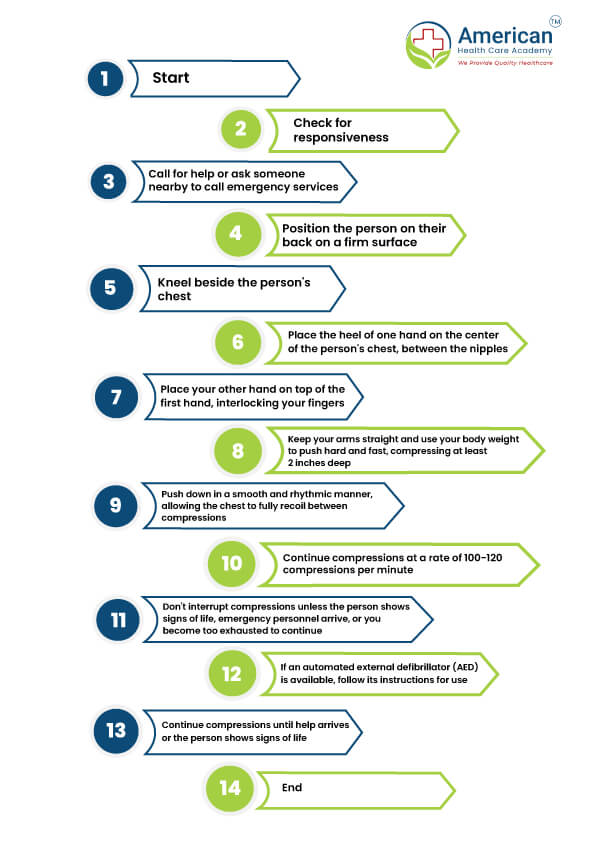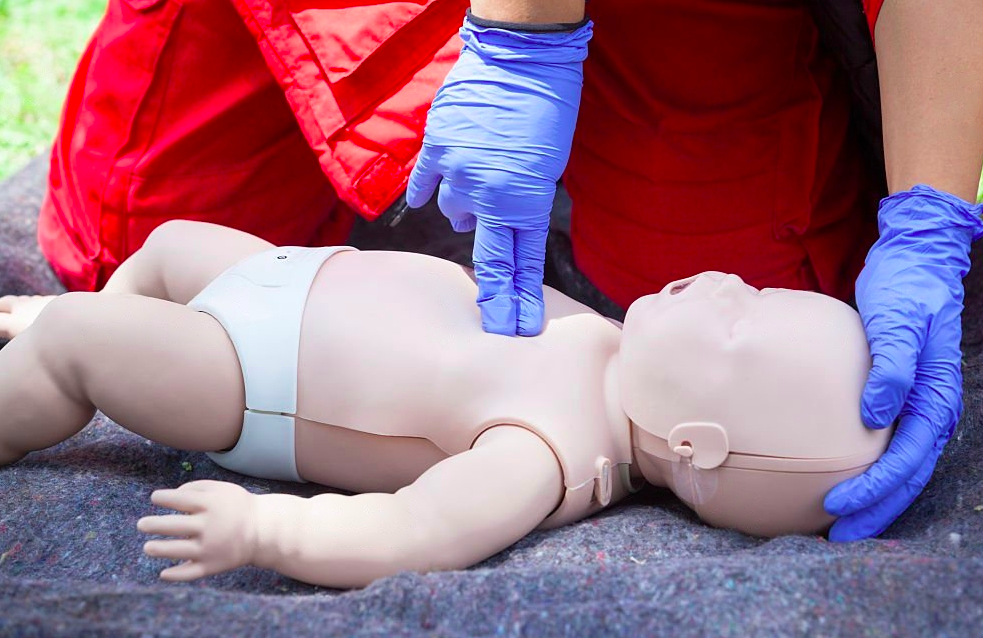Imagine a scenario where you witness a fellow passenger’s child collapse on the bus. As a CPR-skilled individual, you would want to jump in and start chest compressions and rescue breaths. But you are unwilling to deliver rescue breaths to an unknown person. Does that mean you will let the victim suffer? The best option is to start compression-only CPR for infants and children. With it, you can deliver a life-saving technique and not come near the patient.
Compressions only CPR revolves around delivering only chest compressions to revive and cardiac arrest victims. As this process helps maintain blood flow, there are higher chances of saving the victim. Research also says that people remember the flow of hands-on CPR better than its complete version. Read on to learn more about this technique to ensure you can help a victim in need.
What is compression-only CPR?
Compression-only CPR, or hands-on CPR, focuses solely on chest compressions. At the same time, traditional CPR includes chest compressions and rescue breaths. Compression-only CPR involves pushing down only on the chest at a fast pace. This method prioritizes maintaining blood circulation during cardiac arrest. A recent study shows that hands-only CPR is easier for bystanders as more people are likely to perform CPR on unknown individuals. This technique can surely assist in the out-of-hospital cases of cardiac arrest in the USA.
Be Prepared. Be CPR Certified.
Start your online CPR training today and learn life-saving skills.
Advantages of compression-only CPR for infants and children
Hands-only CPR in infants helps the blood flow throughout the victim’s body, ensuring a steady oxygen flow. It is recommended for adults, and the approach for infants and children differs due to their unique physiology. Here are the potential advantages of Compressions -only CPR:
- Simplicity: Compression-only CPR is simpler and easier to remember, making it more likely that bystanders will take prompt action in an emergency involving infants or children.
- Minimized Risk: It reduces the risk of over-inflation of the lungs in tiny bodies, which can be a concern when providing rescue breaths to infants.
- Consistent Blood Circulation: Continuous chest compressions help maintain blood circulation, increasing the chances of survival.
- Increased Bystander Participation: Compression-only CPR may encourage more bystanders to intervene, eliminating the hesitation of providing rescue breaths, especially for infants.
Read More: Online CPR Training vs. Local CPR Training
Steps of Compression-only CPR

Compare the compression-only technique for children, infants and adults
The below table shows a comparison between infant, child and adult CPR based on 5 essential parameters.
| Parameter | Hands-Only CPR for Adults | Hands-Only CPR for Children | Hands-Only CPR for Infants |
| Hand Placement | Center of the chest, just below the nipple line. | Center of the chest, just below the nipple line. | Two fingers (index and middle) at the center of the chest, just below the nipple line. |
| Compression Depth | At least 2 inches deep. | At least 2 inches deep. | About 1.5 inches deep (1/3 the depth of the chest). |
| Compression Rate | 100-120 compressions per minute. | 100-120 compressions per minute. | The infant CPR compression rate is 100-120 compressions per minute. |
| Hand Position | Interlock fingers of both hands, keep elbows straight. | You may need to use only one palm if the child is young. Or Interlock fingers, keep elbows straight. | Two fingers in the center of the chest, keeping the other hand on the infant’s forehead for stabilization. |
| Special Considerations | For pregnant women, avoid compressions directly on the breastbone. | Adjust force to the child’s size; use one or two hands based on the child’s age. | Use minimal force and focus on proper hand positioning for infants; consider using two thumbs for very small infants. Ensure the airway is clear. |
Read More: Chest Compression Dynamics
Learn CPR. Save Lives. Get Certified Online.
Master essential CPR techniques and get certified today.
Conclusion
While hands-only CPR may be considered in certain situations, it’s crucial to note that traditional CPR with rescue breaths is generally the preferred method for infants and children. You must gain knowledge of the child and infant CPR compression rate and depth. Proper training in compression-only CPR for infants ensures a more comprehensive and effective response tailored to the specific needs of younger individuals.









